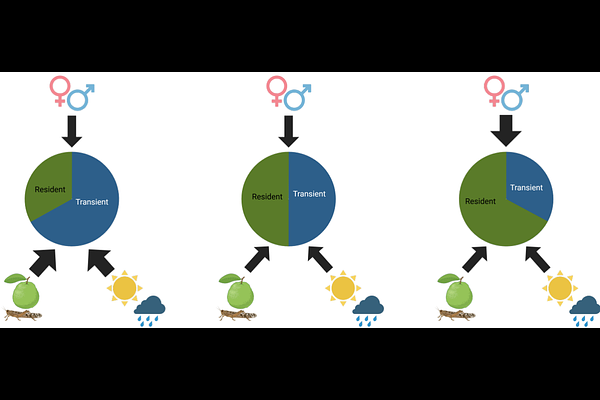Diet, Climatic Conditions, and Sex Affect the Mycobiome of Wild Common Marmosets (Callithrix jacchus)

Diet, Climatic Conditions, and Sex Affect the Mycobiome of Wild Common Marmosets (Callithrix jacchus)
Gombash, B. J.; Garber, P. A.; Finnegan, P. M.; McKenney, A. C.; Bicca-Marques, J. C.; De la Fuente, M. F.; Abreu, F.; Souto, A.; Schiel, N.; Amato, K. R. J.; Mallott, E. K.
AbstractRecent research on the gut mycobiome, or the fungal portion of the gut microbial community, suggests that it interacts with host physiology and impacts host health. However, fundamental questions about how the mycobiome is assembled remain unanswered. It remains unclear whether the fungi detected in the gut are predominantly residents of the gastrointestinal tract or if they are largely transient and pass through. To address this question, we sought to determine whether host factors (e.g., sex) or external environmental factors (e.g., variable climatic conditions and diet) were more strongly correlated with the gut mycobiome of common marmosets (Callithrix jacchus), a primate species living in the semi-arid Caatinga biome of northeastern Brazil. A stronger correlation with host factors, would suggest a more resident mycobiome, while a stronger association with external environmental factors suggests a more transient mycobiome. We collected 52 marmoset fecal samples across a 2-year period and DNA metabarcoding was used to assess both the mycobiome and diet of each sample. We used FUNGuild to assign ecological roles to the fungi, which were sorted into resident (e.g. animal pathogens) and transient (e.g. plant pathogens) groups. We found that mycobiome richness and evenness varied by host sex and correlated with the arthropod component of the diet while mycobiome composition varied between wetter and drier periods and correlated with the plant portion of the diet. The fact that external environmental factors were associated with the presence of specific taxa led us to conclude that the mycobiome is largely made up of transient taxa.